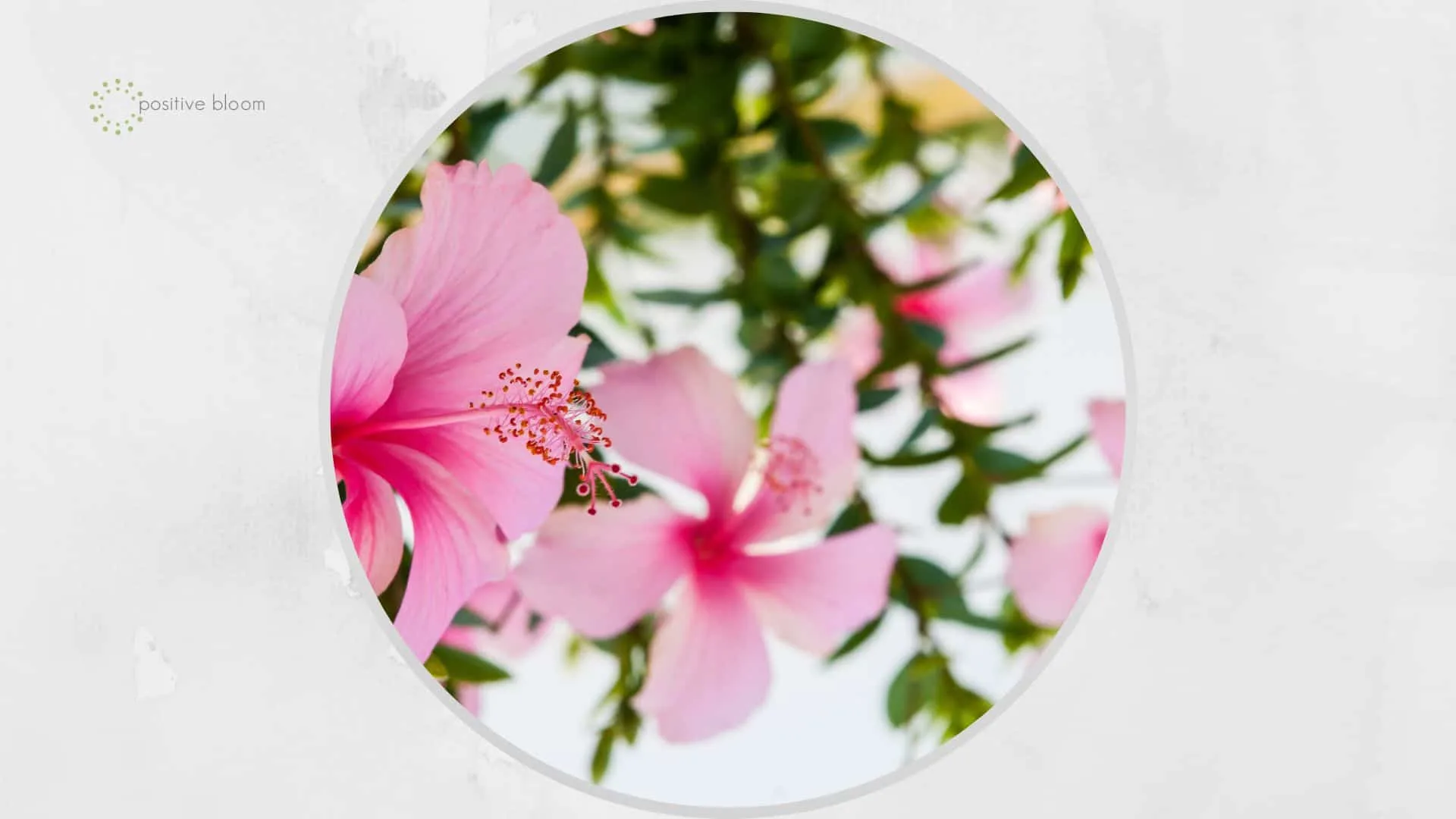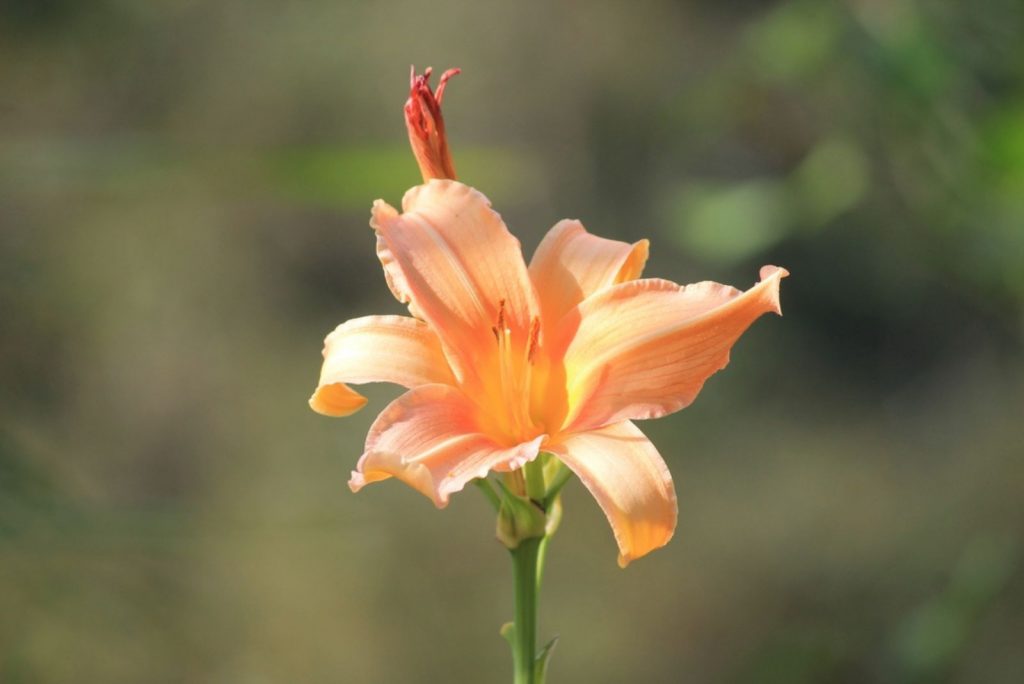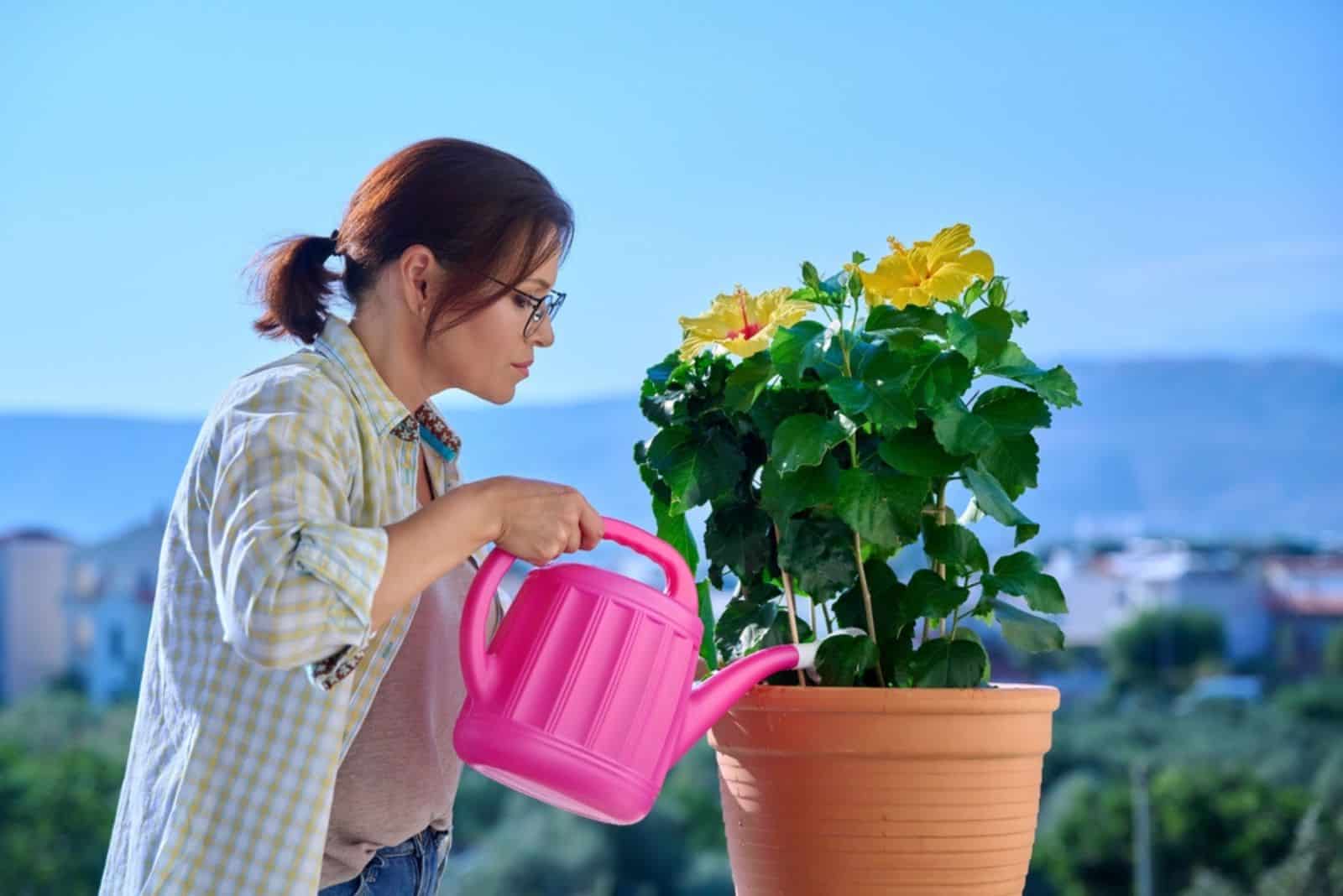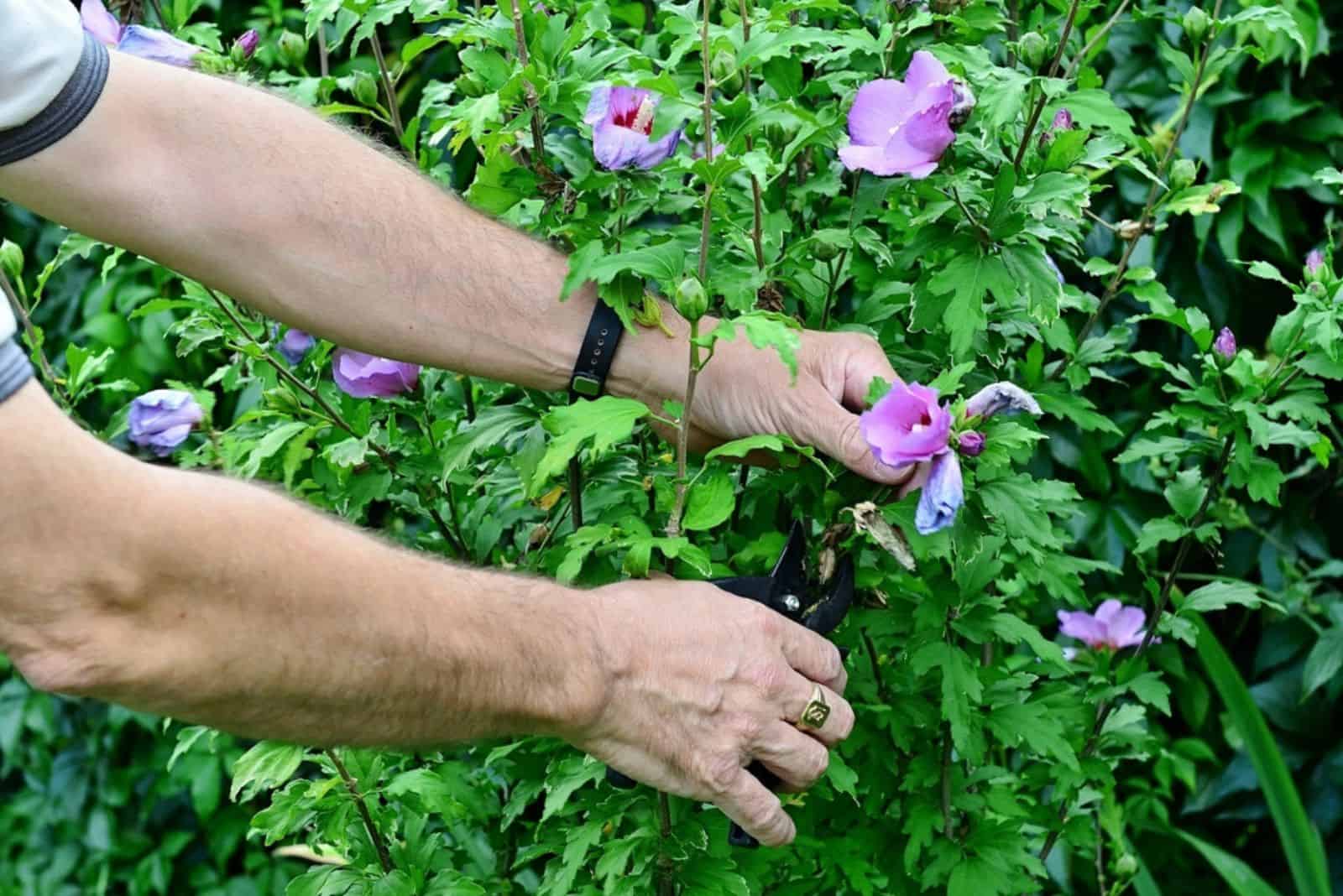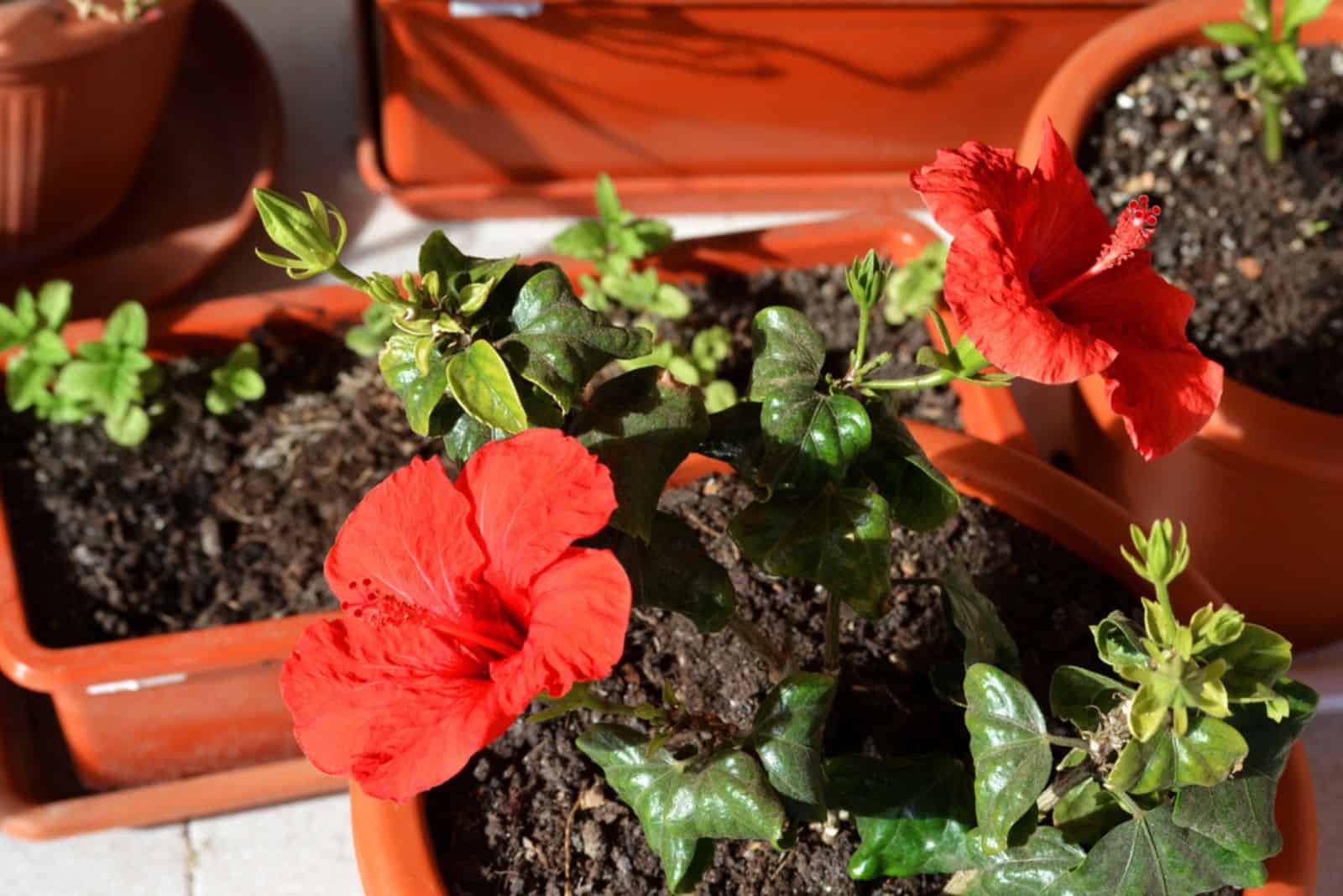It’s only natural that we want to enjoy the full glory of our plants, and one way to do that is by enticing them to flower, especially plants famous for their blossoms.
One such plant is the hibiscus, and it’s really unfulfilling to see all the greens on a magnificent shrub, but no orange, pink, white, yellow, or multicolored flowers.
I wrote this article to help you deal with the issue of your hibiscus not blooming, and there are eight simple steps to follow in order to do so.
They involve choosing the right variety, giving it enough light, moisture, and fertilizer, as well as pruning and more.
Let’s take a closer look.
Ensure Proper Lighting
There are many different hibiscus species out there, and not all of them require the same amount of light to flower.
The general rule is that hibiscus plants thrive in full sun, and if you want them to produce ample blossoms, you should plant them in a location where they can get 6-8 hours of direct light each day.
This can be an eastern or southern corner of your garden (or home, if you want to grow this plant indoors). This flowering shrub will get enough sunlight in this area and won’t obtain any sunburns since the sun isn’t that harsh.
However, even though the general notion is that these plants require plenty of sunlight to flower abundantly, exposing them to too much light will achieve the opposite effect. (1)
Therefore, if you grow your plant under grow lights, make sure to provide them with complete darkness at night so that they can bloom profusely.
Of course, darkness can inhibit flowering, and research has shown that if we keep a hibiscus in the dark for 6-9 days, it’ll produce much less flowers later on. (2)
Luckily, this much dark exposure can only happen when we move the plant, so be careful if you ever move it.
Water Properly
Another way to entice your hibiscus plant to bloom is by only watering it when necessary. Hibiscus plant care teaches us the proper way of watering these plants, which is whenever the soil feels a bit dry.
Generally speaking, in-ground plants require less moisture than potted ones due to slower drainage, but it always depends on the temperature, soil texture, and humidity.
If you over or underwater your hibiscus, it can get stressed out and stop producing blossoms, stop growing, and even become infected with root rot.
Another thing you need to be aware of is the type of water you use. Tap water, for instance, may contain too much chlorine and fluoride, which build up inside your plant and prevent the proper uptake of moisture and nutrients.
If your plant doesn’t get plenty of water and the necessary minerals, it won’t bloom the way it should.
Pro tip: If you’re not that keen on collecting rainwater or using distilled water, you can leave the tap water on a counter overnight for the chlorine to evaporate. If you have water high in fluoride, you’ll have to get a filter.
Watering An In-Ground Hibiscus
The main indicator of how much you should water an in-ground hibiscus is temperature.
If the temperatures are between 70-80 degrees, irrigate your plant once a day. If they’re between 80-90 degrees, water it two times a day, and if they come close to a hundred, you might even need to water your plant three times a day.
Rainfall can also affect the frequency of watering and help you avoid overwatering your plants.
For instance, I don’t have to irrigate my outdoor hibiscus that often during the summer since there’s a lot of rainfall, but that doesn’t have to be the case in your region. One example is Kentucky, where you might need to irrigate three times a day since it’s extremely hot.
Finally, you should reduce the watering frequency by half or more in winter if you live in a climate with a lot of precipitation in the colder months.
Watering A Potted Hibiscus
The frequency of watering a potted hibiscus mainly depends on the season and the other growing conditions, such as the porosity of the pot and the substrate, temperature, etc.
Additionally, containers drain faster than in-ground soil, so you’ll have to irrigate your hibiscus more often to prevent the medium from completely drying out.
If the conditions aren’t that hot, you can get by with watering your plant 3-4 times per week. And once the summer and its scorching weather arrives, you should increase this to once a day.
However, if you planted your hibiscus in a heavier soil, you shouldn’t water it that frequently or it may get overwatered.
Therefore, always check the soil moisture before irrigating your hibiscus. You can do this by sticking your finger into the substrate, and if it’s moist, wait a day or two before watering it.
Also, this plant goes dormant in winter, which is why you should reduce watering during that period. Luckily, the finger method works well in this case, so only irrigate your hibiscus if the top 1-2 inches of the growing medium are dry.
Apply Suitable Fertilizers
Hibiscus plants such as the hibiscus Red Heart require plenty of fertilizer to produce abundant blossoms, but not every plant food is suitable for this shrub.
For instance, phosphorus and potassium are known as nutrients which aid blooming. However, research has shown that higher amounts of phosphorus lead to more flower production, while more potassium doesn’t make any real difference. (3)
On the other hand, too much phosphorus in the soil can lead to the opposite effect, which is why it’s so important to find the right balance between nutrients.
Nitrogen is another mineral that can aid flowering because it increases the absorption of phosphorus. (4)
However, too much nitrogen will promote the growth of leaves and branches at the expense of flowers.
Therefore, it wouldn’t be a bad idea to test your soil with a simple soil testing kit from Amazon and then use appropriate fertilizers. I did this in my garden, and realized I can use general hibiscus fertilizer in addition to compost before planting.
Fertilizing Hibiscus
Once you decide on a fertilizer (a well-balanced one or a hibiscus fertilizer such as 10-4-12), you can start feeding your plants.
Fertilize your potted hibiscus once or twice a month with a diluted liquid fertilizer throughout its growing season.
The story is a bit different for in-ground plants. If you have a fertile substrate, you can simply work some compost into it, mulch your hibiscus, and it’ll be good to go.
But if you have infertile and sandy soils, adding some compost to improve the texture and fertilizing throughout the season might be a good option for you.
Prune At The Right Time
Pruning your hibiscus can promote or inhibit blooming, depending on how you do it.
For instance, these plants only produce flowers on new branches, which is why it’s so important to leave them and remove the old growth as much as you can.
If you prune new growth, your hibiscus won’t flower as much or it’ll take it much longer to produce blossoms.
Additionally, you should trim your hibiscus right after it wakes from dormancy since that won’t cause too much stress to your plant and it’ll quickly put on new growth.
You can cut back all the leggy and winter-damaged branches as the hibiscus is a fast-growing plant that will quickly grow in height.
I have a fiesta hibiscus and I always cut it back near the end of winter. You can also prune your hibiscus at the beginning of spring if you live in a colder region.
However, the best sign that can help you determine the right time for pruning is the appearance of new growth – just make sure to remove old instead of new growth.
If you need more hibiscus pruning tips, here’s a video that can help you:
Examine The Pot
If you have a potted hibiscus, there are a couple of factors that can cause a lack of blossoms, such as a pot that’s too small, waterlogging, and old soil.
Sometimes, the hibiscus overgrows its container and its roots become crowded. This state can lead to inadequate absorption of moisture and nutrients, eventually leading to poor flowering.
Furthermore, this indicates that the pot is too small for your plant, so it drains too fast and doesn’t hold enough water for your plant to thrive or produce blossoms.
On the other hand, if your pot doesn’t have drainage holes or is made of plastic, it retains too much water, which can lead to waterlogging.
Such a wet environment isn’t suitable for hibiscus plants and can lead to root rot. This disease prevents normal root functioning, hindering the absorption of water and essential nutrients, which affects flowering as well.
Therefore, it is essential to choose the correct planter for your hibiscus plants. I used to repot my container hibiscus whenever it doubled in size, and it turned out to be a good method.
I also use terracotta pots with a drainage hole since they don’t hold too much water, making overwatering less likely.
Use An Appropriate Growing Medium
Whether you have a cranberry hibiscus, painted lady, or red heart, the soil requirements remain the same. And if you don’t meet them, poor flowering will occur.
These plants require fertile and well-draining substrates with a pH level between 6.5-6.8.
Soil pH Level
The pH value of the soil is important since highly acidic or alkaline mediums will prevent optimal absorption of nutrients, leading to poor blooming.
Luckily, most soil test kits can measure the acidity or alkalinity of the soil and help you deal with the issue accordingly.
For instance, if the growing medium is too acidic for your hibiscus, you can add some lime to increase the pH value.
And if the soil is too alkaline, you can use an acidifying agent such as garden sulfur, vinegar, or lemon juice.
Heavy Soil
Heavy substrates will cause overwatering and make your entire plant struggle. You’ll notice slow growth, droopiness, and lack of flowers once the blooming time arrives.
Fortunately, you can amend heavy substrates with compost, pumice, and similar well draining materials.
You can even use sand, but make sure to use it in a 1:1 ratio since wet sand can also cause compaction and increase the risk of overwatering.
Sandy Soil
Sandy soils may lead to underwatering, which is why you should improve their texture with compost or some similar moisture-retentive material.
Drought stress can cause a lack of flowering, so make sure to plant your hibiscus in a loose, yet water-retentive soil to provide suitable hydration.
I like to mulch my hibiscus plants since it can increase moisture-retention and keep this shrub moisturized during the hottest periods.
Salty Soil
Salinity of the growing medium can negatively affect the growth and flowering of a hibiscus. Fortunately, you can alleviate these conditions by using humic acid or effective microorganisms once a month. (5)
Make sure to test the salinity of the substrate as well, especially if you live in a coastal area.
To test the level of salt in your garden soil, you need to take some samples, mix them with distilled water, and use a salinity meter to read the findings.
Here are some more tips on how to do it:
Deal With Pests And Diseases At Once
Pest infestations and diseases can also cause a lack of flowers on your hibiscus and endanger its health if you don’t deal with them on time.
The most common hibiscus pests and diseases are sap-sucking aphids, mealybugs, thrips, spider mites, etc., and root rot.
You need to deal with the infestation as soon as you notice it to avoid your plant deteriorating due to a lack of fluid.
Luckily, you can easily remove hibiscus pests by using organic pesticides such as neem oil, or picking them off one by one if the infestation isn’t too severe.
As for root rot, you have to remove all the infected parts and repot your plant into a new container and fresh soil.
Choose A Suitable Variety For Your Zone
Finally, another reason that your hibiscus isn’t flowering might be the temperature, which is why it’s important to choose a variety suitable for your USDA hardiness zone.
There are two varieties of this plant – the hardy (perennial) and tropical ones, and flowering greatly depends on this.
For instance, a hardy hibiscus can survive down to zone 5, while the tropical varieties need USDA zones 10-12 to fulfill their potential.
Also, higher temperatures (up to 80 degrees) can more than double the rate of bud production and flower formation. (6)
However, the same research also proved that the ideal temperature for the H. moscheutos ‘Disco Belle Mixed’ (and other hardy species) is around 78 degrees Fahrenheit, and conditions above that will result in fewer buds.
Therefore, it is crucial not to expose your plants to too high or low temperatures since both extremes can lead to your hibiscus not blooming.
Tropical Hibiscus
The tropical hibiscus prefers temperatures between 60-85 degrees Fahrenheit, and cannot withstand conditions colder than 35 degrees.
In fact, if the temperatures get colder than 40 degrees, the plant will drop some flower buds and leaves, so take it indoors when the conditions drop down to 50 degrees just to be on the safe side.
This species is also more sensitive to sudden temperature changes than the perennial hibiscus, which is something that took me a while to figure out.
For that reason, I always protect my outdoor hibiscus even though I live in Florida. This way, unexpected gusts of wind and cold don’t stress it out.
And, if you live in a USDA zone below 9, you should take this plant to a more protected location, such as a garage, where it won’t freeze and die.
Hardy Hibiscus
Hardy hibiscus plants also need warm temperatures to flower (60-85 degrees Fahrenheit). However, it can tolerate much colder conditions, with some species surviving temperatures as low as -20 degrees Fahrenheit, so it’s suitable for colder regions.
This variety can easily adapt to temperature changes, which means less care in winter. You don’t have to take them indoors, although you might want to consider mulching and covering them with a freeze cover.
Final Thoughts
The best way to avoid your hibiscus not blooming is to give it enough water, sunlight, and fertilizer.
If you meet all these requirements, you can look for other causes for a lack of blossoms, such as pests and diseases, an inadequate soil type or pot, or pruning at the wrong time.
Of course, it might sometimes be that your hibiscus is too cold, so you need to keep it warm – especially the tropical varieties since they’re more susceptible to cold damage.
Good luck, and until next time!
References:
1. Warner, R. M., & Erwin, J. E. (2003). Effect of Photoperiod and Daily Light Integral on Flowering of Five Hibiscus sp. Scientia Horticulturae.
2. Gibbs, M. M., Blessington, T. M., Price, J. A., & Wang, J. (1989). Dark-storage Temperature and Duration Influences Flowering and Quality Retention of Hibiscus. HortScience.
3. Edson, S. N., McElwee, E. W., & Gaskins, M. H. (1955). Effects of Readily Available N, P₂O₂, and K₂O Levels on Growth and Numbers of Blooms of Hibiscus Plants. Florida State Horticultural Society.
4. Grunes, D. L. (1959). Effect of Nitrogen on the Availability of Soil and Fertilizer Phosphorus to Plants. Advances in Agronomy.
5. Abdel-Hamid Ahmed, M. (2017). Effect of Salinity (NaCl + CaCl₂) and some Soil Additions on Growth, flowering and chemical composition of rose of China (Hibiscus rosa-sinensis L.) plant. Middle East Journal of Agriculture Research.
6. Wang, S. J., Heins, R. D., Carlson, W. H., & Cameron, A. C. (1998). Modeling the Effect of Temperature on Flowering of Hibiscus moscheutos. Acta Horticulturae.

